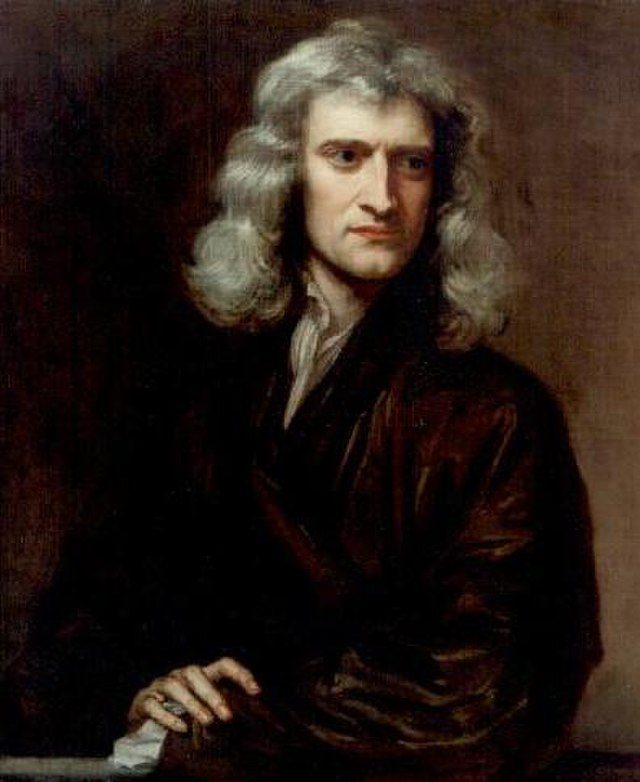
Albert Einstein 1947-by Oren Jack Turner, Princeton, N.J.-Wikimedia Commons
Top 20 Little-Known Facts about Scientists Who Changed the World
Aside from heroes and philanthropists, scientists unquestionably rank among the most significant historical figures. If not for the incredible discoveries produced by these well-known scientists, the world we live in today might be very different. They inspire those who follow in their footsteps through their concepts, research, experiments, writings, and tenacity. These individuals have produced significant advances in a number of scientific disciplines, including biology, physics, astronomy, and chemistry. They have paved the way for new fields of study and discovery and assisted in providing answers to topics that previously appeared unanswerable. We know the accomplishments of prominent scientists like Albert Einstein, but little is known about their personal lives. Here are five lesser-known facts about scientists who contributed significantly to our understanding of the planet.
Read also; 10 Famous Computer Scientists you should know About
Little-known Facts About Scientists in Physical Science Who Changed the World
1. Albert Einstein wed his cousin

Albert Einstein 1921-by Ferdinand Schmutzer-Wikimedia Commons
German-born theoretical physicist Albert Einstein, who was born on March 14, 1879, and died on April 18, 1955, is regarded as one of the greatest and most important physicists of all time. The theory of relativity is what Einstein is most famous for, although he also made significant contributions to the theory of quantum mechanics. You wouldn’t anticipate, though, that the inventor of the E = mc2 equation would wed his first-degree cousin. While he was still wed to Mileva Mari, a physicist, Albert Einstein sought a connection with his cousin Elsa. On February 14, 1919, Einstein filed for divorce from Mari and three years later, he wed Elsa. Since their mothers were sisters and their fathers were first cousins, Elsa and Albert were able to get married as maternal first cousins. Elsa’s children from a previous marriage, Ilse and Margot, were reared by the Einsteins as if they were their own even though they never had children of their own.
2. Stephen Hawking was informed that he wouldn’t live past the age of 23
Stephen William Hawking, who was born in England on 8 January 1942 and passed away on March 14, 2018, was a theoretical physicist, cosmologist, and author. His discovery that black holes produce radiation that can be picked up by specialized equipment is what made him most famous. A Brief History of Time, his best-known book, set a Guinness World Record by continuously ranking as a Sunday Times bestseller for 4 years. At the age of 21, Hawking was identified as having ALS, a motor neuron disease that affected his ability to control his voluntary muscles. Doctors only gave him two years to live when they initially diagnosed him. However, Hawking outlived the medical professionals’ diagnosis by surviving to the full age of 76.
3. Isaac Newton disguised himself as a beggar in order to mix with the unclean and apprehend criminals
Sir Isaac Newton was an English mathematician, physicist, astronomer, alchemist, theologian, and novelist who was born on December 25, 1642, and died on March 20, 1726, or 1727. Newton was the father of classical physics and the discoverer of calculus. However, Newton also penned more than a million words about biblical prophecy. In an era when counterfeiting was illegal, he served as the Warden and Master of England’s Royal Mint. He used a hands-on strategy, dressing like a bum and frequenting bars and brothels where money forgers congregated in order to ignore England’s stratified class system. Due to Newton’s sleuthing, William Chaloner, his greatest adversary, was executed in 1699. More than 20 forgers were apprehended by Newton the detective through his covert operations.
4. Only Marie Curie has received Nobel Awards in two distinct fields

Marie Curie c. 1920s-by Henri Manuel-Wikimedia Commons
Marie Salomea Skodowska-Curie, a Polish and naturalized-French physicist and chemist who conducted groundbreaking research on radioactivity, was born on November 7, 1867, and died on July 4, 1934. Curie received her first Nobel Prize in Physics in 1903 for her work on radiation, and she later received a Nobel Prize in Chemistry in 2011 for her discovery and research on radium and polonium. She is the only scientist in history to receive awards in both categories. After some time, the Curies’ commitment to research brought her recognition as among the greatest scientists of all time and earned her a spot as an element in the Periodic Table.
5. Thomas Edison killed an elephant by electrocution for emphasis
American inventor and businessman Thomas Alva Edison was born on February 11, 1847, and he passed away on October 18, 1931. He created numerous innovations in the production of electric power, mass communication, sound recording, and motion pictures. Edison experimented on an elephant in front of the public to demonstrate that his direct current was less dangerous than Nikola Tesla’s alternating current. Topsy the Asian elephant from Luna Park Zoo was made available for the experiment since she had killed three keepers over the years. Topsy wouldn’t be Edison’s only victim because he also captured footage of other animals being electrocuted.
6. The Periodic Table was created as a result of Dmitry Mendeleev’s Periodic Law

Dmitry Mendeleev 140-190 for collage-by Papa November-Wikimedia Commons
Russian chemist and inventor Dmitri Ivanovich Mendeleev lived from 8 February 1834 to 2 February 1907. Even though you’ve probably never heard of him in your school textbooks, Dmitry Mendeleev was one of the world-changing chemists. Mendeleev initially claimed that the chemical elements formed groups with related properties when they were ordered by atomic weight in his 1869 Periodic Law. He corrected mistakes in atomic weights and utilized the law to anticipate previously unknown elements.
7. Alfred Nobel gave much of his riches to establish the Nobel Prize
Alfred Bernhard Nobel, a Swedish chemist, engineer, inventor, businessman, and philanthropist, was born on October 21, 1833, and died on December 10, 1896. Though he had 355 patents during his lifetime, he is best remembered for having left his riches to create the Nobel Prize, in addition to making other significant scientific achievements. Nobel, who established the highest honor for scientists, was born into abject poverty. However, his work in science allowed him to create explosives like dynamite.
Read also; 20 Most Famous Female Scientists
8. It’s likely that Nikola Tesla had OCD

N.Tesla-by Unknown author-Wikimedia Commons
Nikola Tesla, a Serbian-American inventor, electrical engineer, mechanical engineer, and futurist who was born on July 10, 1856, and died on January 7, 1943, is most remembered for his contributions to the creation of the modern alternating current (AC) energy delivery system. It’s common knowledge that people with high IQs have a propensity for eccentricities, and Nikola Tesla confirmed this. Anything spherical or filthy, as well as hair and pearls, Tesla would not touch. Also obsessed with the number 3, Tesla would circle a building three times before entering it. He would use exactly 18 napkins in order to make his dining utensils glitter before each meal.
9. In order to prevent plagiarism, Leonardo da Vinci wrote his ideas backward
Leonardo di Ser Piero da Vinci, an Italian polymath of the High Renaissance, lived from 15 April 1452 to 2 May 1519 and worked as a painter, draughtsman, engineer, scientist, theorist, sculptor, and architect. Leonardo began writing down his ideas in notebooks in the middle of the fourteen eighties while working as a military and marine engineer for the Duke of Milan. That could sound like any student’s schoolwork, but the author penned everything in the 16th-century Italian mirror script, which is written backward from right to left.
10. Einstein’s brain was donated to scientists after his passing
Albert Einstein passed away in April 1955 as a result of an abdominal aortic aneurysm. The cremation of Einstein’s body was his final request. However, during the examination, Princeton pathologist Thomas Harvey took his brain. Harvey decided to save the brain so that he could examine it and discover Einstein’s genius. Harvey sliced the brain into chunks and gave them to other experts for study with Einstein’s son’s permission.
Little-known Facts About Scientists in Earth sciences Who Changed the World
11. Inge Lehmann outlived the century mark

Inge Lehman-by Even Neuhaus-Wikimedia Commons
Danish seismologist and geophysicist Inge Lehmann lived from 13 May 1888 until 21 February 1993. She discovered in 1936 that the Earth’s molten outer core is surrounded by a solid inner core. Prior to that, seismologists had the belief that the Earth’s core was a single molten sphere, but was unable to explain the detailed measurements of seismic waves from earthquakes that contradicted this theory.
12. The existence of moons on other planets was initially identified by Galileo Galilei
Galileo di Vincenzo Bonaiuti de’ Galilei, frequently referred to as a polymath, was an Italian astronomer, physicist, and engineer who lived from 15 February 1564 to 8 January 1642. Galileo Galilei noticed four non-star objects orbiting Jupiter in 1610, although people at the time did not take his allegations well. His discovery was disapproved of even by the most renowned scientists of the day. The satellites, however, turned out to be the moons of Jupiter: Io, Callisto, Europa, and Ganymede. In honor of Galileo, scientists gave the moons a new name, Galilean satellites.
Little-known Facts About Scientists in Life Science Who Changed the World
13. The theory of evolution was not created solely by Charles Darwin

Charles Darwin 01-by Julia Margaret Cameron-Wikimedia Commons
Charles Robert Darwin, an English scientist, geologist, and biologist who was born on February 12, 1809, and died on April 19, 1882, is well-known for his contributions to evolutionary biology. However, in order to find the patterns and theories of evolution, Darwin worked alongside fellow British naturalist Alfred Russel Wallace. The two naturalists corresponded via letters while separated. Together, they realized that in order for creatures to thrive, they must adapt to their surroundings. The 1858 publication On the Tendency of Species to Form Varieties, and on the Perpetuation of Varieties and Species by Natural Means of Selection was co-authored by Darwin and Wallace.
14. Francis Crick, who worked on the DNA structure discovery, thought that humans descended from aliens
Francis Harry Compton Crick, an English molecular biologist, biophysicist, and neurologist, was born on 8 June 1916 and passed away on 28 July 2004. He, James Watson, Rosalind Franklin, and Maurice Wilkins were instrumental in figuring out the DNA molecule’s helical helix. Crick had a sharp mind and made significant contributions to science and molecular biology. He, however, started to accept “directed panspermia” in the 1970s, a hoax scientific hypothesis that claims all life on Earth originated from aliens.
15. Rosalind Franklin was very direct

Rosalind Franklin-by MRC Laboratory of Molecular Biology-Wikimedia Commons
Rosalind Elsie Franklin, a British chemist and X-ray crystallographer who lived from 25 July 1920 to 16 April 1958, made significant contributions to our understanding of the molecular structures of DNA (deoxyribonucleic acid), RNA (ribonucleic acid), viruses, coal, and graphite. She has been referred to as the “wronged heroine,” the “dark lady of DNA,” the “forgotten heroine,” a “feminist icon,” and the “Sylvia Plath of molecular biology” for her contributions to the discovery of the structure of DNA, despite the fact that her work on coal and viruses was recognized during her lifetime.
Franklin initially intended to work alongside Watson, Wilkins, and Crick to explore DNA, but she instead became estranged from the group. Franklin and Wilkins were at odds because Franklin was combative and enjoyed the heated conversation while Wilkins was quiet and reticent. She has however been that way for most of her life. Franklin, who was 18 years old when she enrolled at the University of Cambridge in 1938, even complained about the caliber of the chemistry lectures in one of her classes.
16. It is unclear who made the first discovery of DNA
Only James D. Watson, Francis Crick, and Maurice Wilkins received the Nobel Peace Prize for discovering the double-helix structure of DNA. However, there has been debate in the scientific world about whether or not that credit is legitimate. Long before Watson, Crick, and Wilkins discovered the double helix, Rosalind Franklin introduced the idea of DNA’s helical structure in a lecture at King’s College. Both parties competed for credit for the discovery as a result. The coworkers who ultimately won the Nobel Prize and gained notoriety among illustrious scientists were those three.
17. The parents of Carl Linnaeus wanted him to become a priest

Carl von Linné-by Alexander Roslin-Wikimedia Commons
Swedish botanist, biologist, taxonomist, and physician Carl Linnaeus (23 May 1707 – 10 January 1778), also known as Carl von Linné after being knighted in 1761, is credited with formalizing binomial nomenclature, the current way of naming species. He has the moniker “father of modern taxonomy.” It makes it fitting that Carl von Linné, often known as Carl Linnaeus, left behind a heritage of naming things. However, his parents had wanted him to devote his life to the Church before pursuing a profession in biology.
Read also; 15 Most Famous Christian Scientists
18. Charles Darwin never became a Christian
The debate over teaching the Theory of Evolution in religious institutions gave rise to tales about Charles Darwin’s alleged change of heart. One persistent urban legend holds that Darwin returned to Christianity as he lay dying. His son Francis Darwin, however, disputed these ludicrous assertions. Darwin talked about agnosticism and how it suited his worldview in his autobiography.
19. William Buckland desired to attempt to eat every species of animal

William Buckland c1845-by Unknown author-Wikimedia Commons
English theologian William Buckland, who served as Dean of Westminster, was born on 12 March 1784 and died on 14 August 1856. He was a paleontologist and geologist as well. As the first person to give a comprehensive account of a fossil he termed the Megalosaurus in the 19th century, Buckland established himself as a notable figure. Although Buckland made contributions to paleontology, he had peculiar tastes. In particular, Buckland is alleged to have consumed the preserved heart of King Louis XIV as well as mice, porpoises, panthers, bluebottle flies, and panthers.
20. Scientist Athanasius Kircher believed in mythical creatures

Athanasius Kircher-by Cornelis Bloemaert-Wikimedia Commons
Athanasius Kircher was a German Jesuit scholar and polymath who authored over 40 significant works. He was born on May 2, 1602, and died on November 27, 1680. Kircher also referred to as the Master of a Hundred Arts, studied everything from science and medicine to religion. He did, however, genuinely believe that dragons, giants, and mermaids exist. Kircher’s instance demonstrates that there is a fine line between genius and insanity when it comes to these well-known scientists.
Scientists are crucial in educating nonscientists about the principles and methods of science. Our lives are made better by science’s advancements in many different ways.
Planning a trip to Paris ? Get ready !
These are Amazon’s best-selling travel products that you may need for coming to Paris.
Bookstore
- The best travel book : Rick Steves – Paris 2023 – Learn more here
- Fodor’s Paris 2024 – Learn more here
Travel Gear
- Venture Pal Lightweight Backpack – Learn more here
- Samsonite Winfield 2 28″ Luggage – Learn more here
- Swig Savvy’s Stainless Steel Insulated Water Bottle – Learn more here
Check Amazon’s best-seller list for the most popular travel accessories. We sometimes read this list just to find out what new travel products people are buying.










